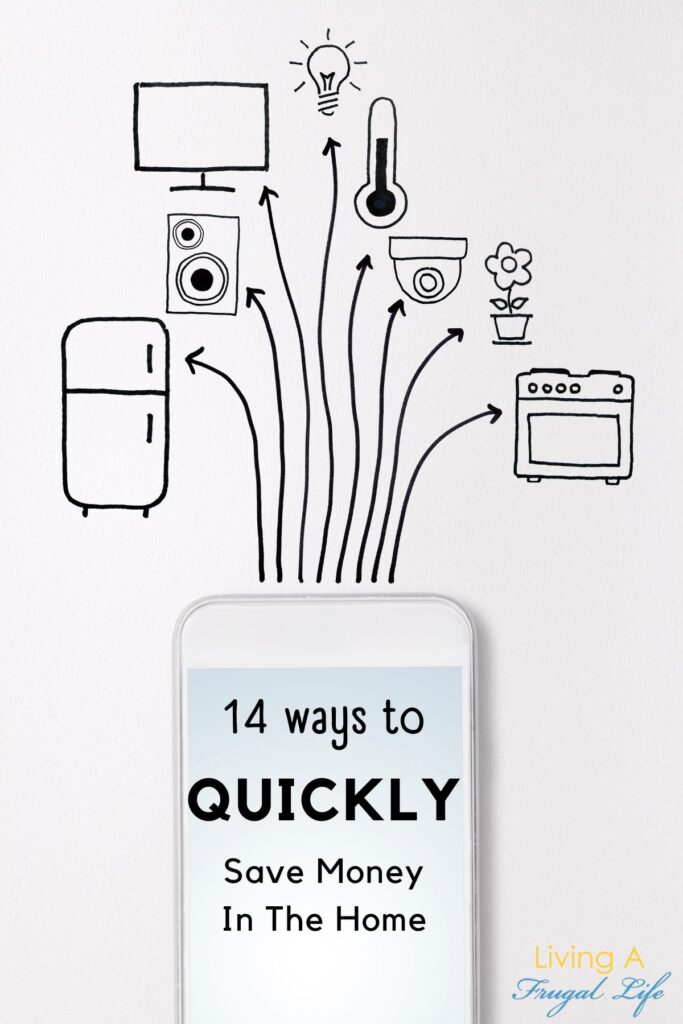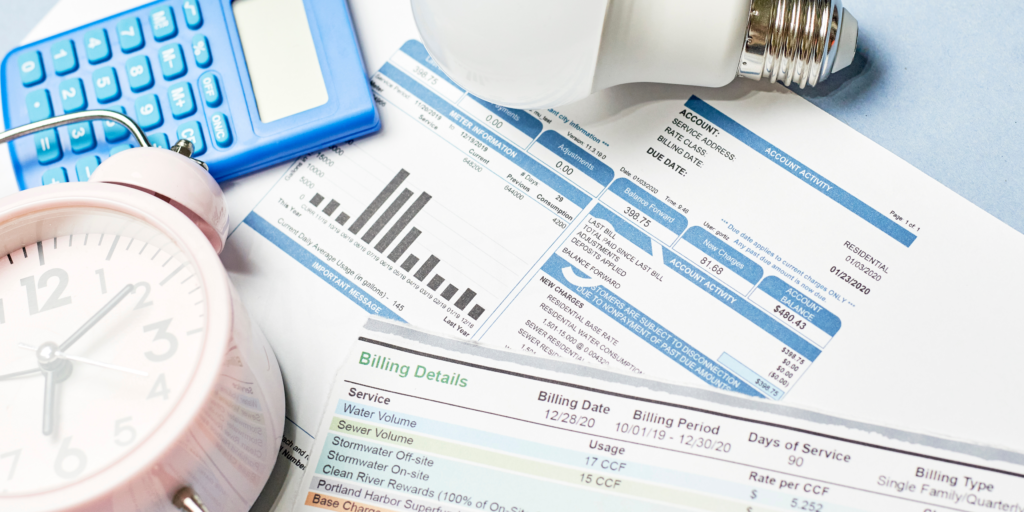14 Ways to Quickly Save Money In The Home
In light of the current state of the economy, many individuals are searching for practical ways to conserve money within their households. While it is common knowledge to assess subscriptions and determine which ones to keep or cancel, several other excellent ways to save money around the house exist.

How to save tons of money in your home
Save money on your electric bill by unplugging appliances when not in use or using a power strip. This is the best way to conserve money on energy costs and can save you an additional few hundred dollars each year.
Read more: 14 Ways to Quickly Save Money In The HomeLastly, incorporating creative savings ideas like using a money market account instead of a traditional savings account can also save you an additional amount of money each month. These easy ways to cut costs not only help the environment and save money but also improve your overall money management.
Looking to save more money on everyday home expenses
One great way to save is by making your own household cleaners instead of buying expensive commercial products. You can often save hundreds of dollars each month by doing this simple switch. In addition to saving money, you can also improve the value of your home by practicing sustainability.
Another great way to economize money is by line-drying your clothes instead of using a dryer. Not only will this save you thousands over time, but it will also help you cut down on energy costs. By making small changes like these, the savings can add up quickly without changing your typical setting of living in your house or going about your daily routine.
What is the fastest way to cut costs?
Want to save money quickly? One of the fastest ways is to reduce your utility bills. Start by learning how to save money on your heating and electricity bills. There are many ways to cut costs, such as turning off lights when not in use, using energy-efficient appliances, and adjusting your thermostat. You’ll save even more in the long run by reallocating that extra money towards paying off debt or building an emergency fund.
Another tip to help save is to save energy by making your home a smart home. Simple changes like using baking soda for cleaning or doing basic electrical work, the Department of Energy estimates that adjusting your spending habits can save you up to 25% on your utility bills. By using warm water instead of hot and finding ways to save money on gas save money each month and build a nest egg for the future.

Easy Ways to Save Money Around the House
Saving Money Starts With a Budget
If you don’t have a budget, it is hard to know where your money is going. Sit down with your spouse and create a family budget. This budget can be as complicated or as uncomplicated as you want it to be. The goal here is to know how much money you have coming in and have a plan for how it will be spent. Being fully aware of your household finances will save your family a lot of money.
One tip I have found very helpful is to save monthly for the yearly and bi-yearly bills. Open up a high-yield savings account and move that money into that account to sit and wait for the bill to be due. Then all the money will earn a bunch of interest as it sits. Then you earn money more quickly and can use the excess for other items in your budget. In our high-yield accounts, we earn about $4 a month for each $1000 in the account.
Have a garage sale
Consider making decluttering a part of your routine to save money in the home, setting aside time once or twice a year to gather items your family no longer uses. Hosting a garage sale can not only help you clear out unneeded belongings but also provide a sense of renewal for your living space. It’s a chance to reevaluate what you own, reduce clutter, and potentially earn some extra income in the process.
Many households unknowingly accumulate items they don’t truly need, leading to unnecessary spending. By holding a garage sale, you can not only declutter your home but also recoup some of that spending. It’s a sustainable approach to managing your belongings and finances, ensuring that items find new homes instead of ending up in landfills.
Organizing a garage sale once or twice a year can provide your family with a financial boost. Whether you use the proceeds as fun money for special treats or add them to your savings for future goals, it’s a practical way to make your belongings work for you. Additionally, it can be a fun and rewarding experience for the whole family, turning decluttering into a positive and productive activity.
Get Organized
Take a weekend to organize your home from top to bottom. Go through every corner and ensure that everything you own has a designated place. We use shelf storage bins and labels to be sure everyone knows the spots and to keep everything corralled, especially toys.
Create two piles: one for items to discard and another for a potential garage sale. This thorough organization will help you know exactly what you have, eliminating the need to purchase items you already own. When our homes are disorganized, it’s easy to overlook possessions we already have, leading to unnecessary purchases.
Keeping your home organized has numerous benefits. Not only does it reduce clutter and create a more pleasant living environment, but it also saves you time and money. Knowing where everything is located streamlines daily tasks and reduces stress. Additionally, a well-organized home is often more inviting and can improve your overall sense of well-being
Make a Meal Plan
Creating a menu for your family, whether it’s a weekly or monthly plan, can be a game-changer. Knowing what you’ll eat each night eliminates the stress of last-minute meal decisions and can help you avoid expensive fast food or grocery store runs. It’s a simple habit that saves time, money, and mental energy.
Having a menu allows you to shop more efficiently, buy ingredients in bulk, reduce food waste, and cook from scratch by planning meals that use similar ingredients. It also helps with healthier eating habits, as you can incorporate a variety of nutritious meals into your plan. Overall, taking the time to create a menu can bring a sense of organization and ease to your meal-planning routine, benefiting both your budget and your family’s well-being.
Check your subscriptions
Managing your finances wisely involves a strategic approach to monthly expenditures, especially when it comes to subscriptions. Start by cutting cable. Then conduct a thorough review of all your current subscriptions to identify any that no longer serve your needs or that you simply don’t use. By taking the time to assess and potentially cancel these subscriptions, you can uncover substantial savings that can be redirected toward more meaningful financial goals.
In addition to reviewing existing commitments, it’s also wise to approach new offers cautiously. Before committing to any new services, consider exploring free trial periods to get a better understanding of their value and fit for your lifestyle. This cautious approach can help you avoid unnecessary expenses and ensure that you’re only paying for services that truly enhance your life.
By adopting these proactive strategies, you can better control your finances and make more informed decisions about your ongoing expenses. Regularly reviewing and reassessing your subscriptions can lead to significant savings over time, allowing you to allocate your resources to things that truly matter to you.
Switch Your Bulbs to LEDs
There are two ways to save in this area. First, start watching your utility usage. There are many ways you can do that. When you leave a room, turn off the lights. Use natural light as much as possible to keep the lights off during the day.
Another thing you can do is change your bulbs to LED bulbs. Many changes have been made to LED bulbs over the years. They are some of the safest lightbulbs we have seen. They don’t get hot, and they mimic natural light very well.
They are almost the same price as other bulbs now, and they also last a long time! On average 1 LED bulb can last up to 14 years! I changed my other bulbs every couple of months before switching to quality LED!
So, you will not only spend less, but you will also save yourself time by not having to change the bulbs as often.
this will save you so much!
Caulk or Weatherstrip Around Doors and Windows
One simple and effective way to reduce your energy bills and stay comfortable throughout the year is to ensure that your home is adequately sealed against drafts. Drafts can cause your HVAC system to work harder than it needs to, leading to higher energy consumption and increased costs.
One of the best ways to tackle this issue is to use caulk and weatherstripping to seal around your windows and doors. Not only is this an easy and affordable solution, but it can also help to improve your home’s overall energy efficiency and reduce your carbon footprint. By taking the time to check for and seal any gaps or cracks, you can enjoy a more comfortable and energy-efficient home without breaking the bank.
Insulate your home with curtains.
There are tons of different curtains out there. If you are trying to conserve energy costs, it is really important to know what curtains you have.
Windows get drafty and can bring in the cold or the heat from outside, making your heater or AC work harder to fix the change in temperature.
If you want to prevent the drafts, you should get curtains that insulate the windows from the drafts and the heat changes. This is usually a curtain that has an extra layer of fabric to keep the drafts in the window rather than coming into the room and changing the temperature in the room.
Turn down the thermostat.
Adjusting your thermostat seasonally can have a significant impact on both your energy consumption and your monthly bills. During the winter months, lowering the thermostat by just a few degrees can lead to substantial energy savings. Similarly, in the summer, raising the thermostat slightly can help reduce the workload on your cooling system and result in lower energy usage.
Consistently monitoring and adjusting your thermostat settings based on the season can lead to noticeable savings over time. It’s a simple and effective way to make your home more energy-efficient and reduce your overall utility costs.
Most people tend to pay attention to their electricity usage, but don’t forget about water! If you pay for water, you will want to start taking short showers, doing only 1 load of dishes in the dishwasher daily, and paying attention to water usage in the yard. If possible, put your sprinklers on a timer.
Insulate Your Water Heater
Insulating your water heater is one of the easiest ways to save hundreds a year on heating and cooling. To insulate your water heater, you only need two things: a water heater blanket and straps with clips.
A water heater blanket wraps around the water heater to keep the warmth in and reduce the energy needed to repeatedly heat the water. This is especially important if your water heater is outside, in the garage, or in the attic. In those locations, the water heater will get colder and transfer the heat from the water into the air.
When it comes to securing a water heater, there are two material options for the straps: seat belt straps or galvanized metal. Both of these materials are designed to keep the water heater blanket in place and to protect the water heater from damage in the event of an earthquake.
Seat belt straps are a popular choice because they are strong, durable, and easy to install. These straps are made from the same material used to make seat belts in vehicles, which means they are designed to withstand significant amounts of force. They are also adjustable, which allows you to tighten or loosen them as needed to ensure that the water heater stays securely in place.
Galvanized metal straps are another option for securing a water heater. These straps are made from a type of metal coated with zinc to protect it from rust and corrosion. They are also strong and durable, and they can be adjusted to fit any size of water heater. They are also resistant to high temperatures, which makes them a good choice for use in areas where the water heater may be exposed to heat sources.
Use coupons whenever you can
This is a tip that lots of people miss.
In today’s world, where everything is becoming digital, coupons are no exception. Although people might assume that using coupons is a thing of the past, the truth is that it has just evolved and become easier to use.
Taking advantage of coupons is no longer a tedious and time-consuming task. With the help of digital coupons, they are easier to use than ever! One of the most popular apps that you can use for this purpose is Ibotta. This app allows you to browse through a wide range of coupons that can be used at various stores. Once you have selected the coupons that you want to use, all you need to do is upload a picture of your receipt, and the cashback will be credited to your account within a few business days.
Many stores also offer their own apps that provide customers with coupons, rebates, and special pricing on items. For instance, if you frequently shop at Walmart, you can download their app and take advantage of the various discounts they offer. You can also use the app to scan barcodes and determine whether a particular item is on sale.
In conclusion, using coupons is still a viable way to save money, but it has become more convenient and accessible than ever before. With the help of digital coupons and store apps, you can save money without spending hours clipping coupons from newspapers and magazines.
Dry your clothes on a clothesline
Drying clothes on a close line is a lost art. They opt for the convenience of the dryer, which can be faster and easier, especially in inclement weather. Some people can do it outside year-round, and others can not. We live in a place where it gets cold and snowy, so there are parts of the year when we have clothes drying inside and using the dryer for some. But there’s something special about the tradition of hanging clothes on the line. It connects us to a simpler time when people had to rely on nature and their own two hands to get things done.
I try to hang clothes outside whenever I can, even if it’s just for a few items. One of my favorite things about drying clothes outside is the fresh smell they come in with. The sun has antibacterial qualities that can naturally take stains out and can freshen clothes. This, along with the drying ability, gives it a power you can’t find inside without chemicals or energy. I remember watching my grandmother hang clothes on the line when I was a child. She would carefully pin each item up, ensuring they were evenly spaced and had enough room to dry properly. It was a slow and meticulous process, but she always said it was worth it for the fresh scent and the energy savings.
The satisfaction comes with knowing you’re reducing your carbon footprint and getting a little extra sunshine in the process. Plus, there’s something peaceful about standing outside, feeling the breeze on your face, and watching your clothes dance in the wind.
So, if you have the opportunity, I encourage you to give clothesline drying a try. It may take a little more time and effort, but the benefits are well worth it. And who knows, you may just find yourself rediscovering a lost art that brings you closer to nature and to the generations that came before us.
Get a water filter
If you want to save money and reduce waste, consider investing in a refillable water bottle and a filter. Rather than continually buying bottled water, a refillable water bottle and filter can save you money each month.
Filters may seem like a costly investment at first, but they can help you save money in the long run. Using refillable water bottles and filters can also help reduce waste, which can save you money on trash costs. By investing in a refillable water bottle and filter, you can cut back on plastic waste that would otherwise end up in landfills and oceans. So, switching to a refillable water bottle and filter is a cost-effective and practical way to save money and reduce waste
Are there other ways to reduce energy consumption through passive heating and cooling?
Strategic use of the sun, orientation of buildings, insulation, ventilation, windows, shade, and trees can significantly impact the temperature and comfort levels in indoor spaces. By carefully considering these factors, it’s possible to create environments that are naturally comfortable and energy-efficient.
Harnessing the sun’s warmth in the winter through south-facing windows can help reduce heating costs. Similarly, shading windows and walls from direct sunlight in the summer can lower cooling needs. Proper insulation and ventilation play crucial roles in maintaining a consistent temperature and air quality year-round, reducing the reliance on heating and cooling systems.
The layout and orientation of a building can also affect its energy efficiency. Orienting living spaces to take advantage of prevailing breezes can enhance natural ventilation while incorporating shade elements like overhangs and awnings can prevent excessive heat gain. Trees and landscaping can provide additional shade and cooling through evapotranspiration, further reducing the need for mechanical cooling.
In conclusion, there are many practical ways to save money in the home, and every little bit counts. By assessing your subscriptions, reducing your energy usage, shopping smarter, and being mindful of your spending habits, you can reduce your household expenses and save money.






You’ve got some great tips there. We have a massive clear out every so often and sell any bit that we no longer want, that always helps to make a bit of extra cash. I really need to do the first one, our house is getting out of control at the moment. I’ll put it on my, never ending, list of things to do 🙂
I have one of those lists too… someday…. 😉